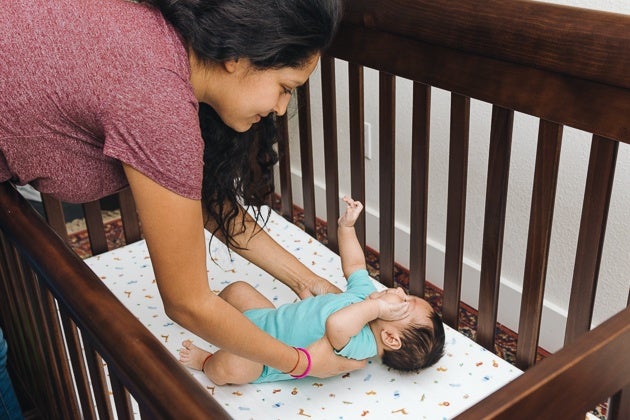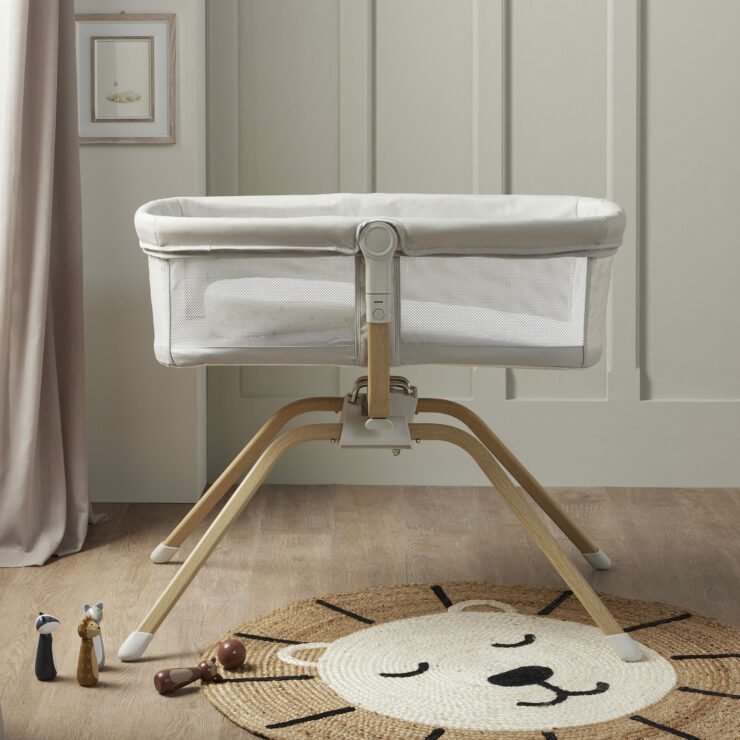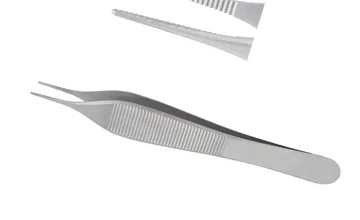Cribs vs. Cots: What’s the Difference and Which Should You Choose?
Cribs vs. Cots

Choosing the right sleeping arrangement for your baby is one of the most important decisions you’ll make as a parent. Among the many options, cribs and cots are two of the most common. But what’s the real difference between them? And more importantly, which one should you choose for your little one? In this article, we’ll break down the key differences between cribs and cots, helping you make an informed decision that suits your family’s needs.
Trusted British Nursery Furniture Brand

Babymore is a trusted British brand that specializes in designing and manufacturing high-quality nursery furniture and baby products. With years of experience, Babymore offers a wide range of award-winning cribs, Cots and cot beds, mattresses, prams, pushchairs, and car seats. Their products are well-loved by parents for their durability, safety, and innovative designs, making them a reliable choice for families looking to create a safe and comfortable nursery.
What is a Crib?
A crib is a small bed designed specifically for infants and young babies. It typically features high, slatted sides to prevent the baby from rolling or falling out, ensuring a safe sleeping environment. Cribs are generally sturdy, with adjustable mattress heights, allowing parents to lower the mattress as the baby grows and becomes more mobile.
Key Features of Cribs:
- Safety Bars: Cribs have high sides or bars, ensuring that babies cannot climb or fall out.
- Adjustable Mattress: Most cribs allow you to adjust the mattress height to match your baby’s developmental stages.
- Long-Term Use: Cribs are designed to accommodate babies from newborns up until around 2–3 years old.
What is a Cot?
A cot, on the other hand, is often used in British English to refer to what is commonly called a crib in the US. However, in many places, a cot can also refer to a slightly smaller bed designed for younger babies, sometimes foldable and more portable than a crib. Cots can be used from birth and are ideal for homes with limited space or parents who prefer more compact, temporary solutions.
Key Features of Cots:
- Compact Size: Cots are usually smaller, making them suitable for newborns and younger babies.
- Portability: Many cots are designed to be lightweight and portable, ideal for traveling or moving from room to room.
- Shorter Use Period: Cots are typically used for the first 6-12 months, depending on the baby’s size and mobility.
The Main Differences Between Cribs and Cots
Now that we’ve defined both terms, let’s dive into the main differences between cribs and cots. These differences will help you decide which one fits your needs better.
1. Size and Space
Cribs tend to be larger than cots, providing more room for your baby to grow. If you have the space in your nursery or bedroom, a crib might be a better option for long-term use. Cots are more compact and take up less space, which is useful in smaller homes or for parents who prefer a more temporary sleeping solution.
2. Longevity of Use
Cribs are built to last longer. Because of their larger size and adjustable mattress, they can be used from infancy until around the toddler years. In contrast, cots are generally used for a shorter period, typically until the baby is around 6 to 12 months old, after which you’ll need to transition to a larger bed.
3. Portability
If you’re a parent who moves frequently or travels often, a cot might be the better choice. Many cots are designed to be foldable and easy to transport. Some even come with carrying cases for added convenience. Cribs, while sturdier, are usually bulkier and more difficult to move.
4. Safety
Both cribs and cots are designed with safety in mind. However, cribs often come with additional features such as adjustable mattress heights, allowing you to lower the mattress as your baby grows. Cots, while safe for newborns, may not offer the same level of adjustability or long-term safety for older babies.
5. Cost
Cots are generally less expensive than cribs due to their smaller size and shorter lifespan. However, because cribs can be used for longer, they might offer better value for money in the long run. The decision here largely depends on your budget and how long you plan to use the bed.
Should You Choose a Crib or a Cot?
The decision between a crib and a cot boils down to your specific needs, space, and budget. Here are a few points to consider:
- Space: If you have limited space, a cot may be the best option. It’s smaller, more compact, and easier to move around.
- Longevity: If you’re looking for a bed that will last through the first couple of years, a crib is a better investment.
- Portability: For parents who travel frequently or need a portable solution, a cot is the way to go.
- Budget: If you’re working with a limited budget, starting with a cot can be a cost-effective choice, but remember that you’ll need to upgrade to a larger bed later.
Transitioning From a Cot to a Crib
If you start with a cot, there will come a time when your baby outgrows it. The transition from a cot to a crib usually happens when your baby is around 6–12 months old, depending on their size and mobility. Look out for signs such as your baby being able to pull themselves up or appearing cramped in the cot.
Conclusion:
Whether you choose a crib or a cot depends on your specific needs, space, and long-term plans. Cribs offer a longer-term solution and are ideal for parents who want a bed that will last through the toddler years. Cots, on the other hand, are perfect for small spaces, portability, and newborns but will require an upgrade after a few months. Whatever your choice, prioritizing safety and comfort is key to ensuring your baby gets the restful sleep they need.




